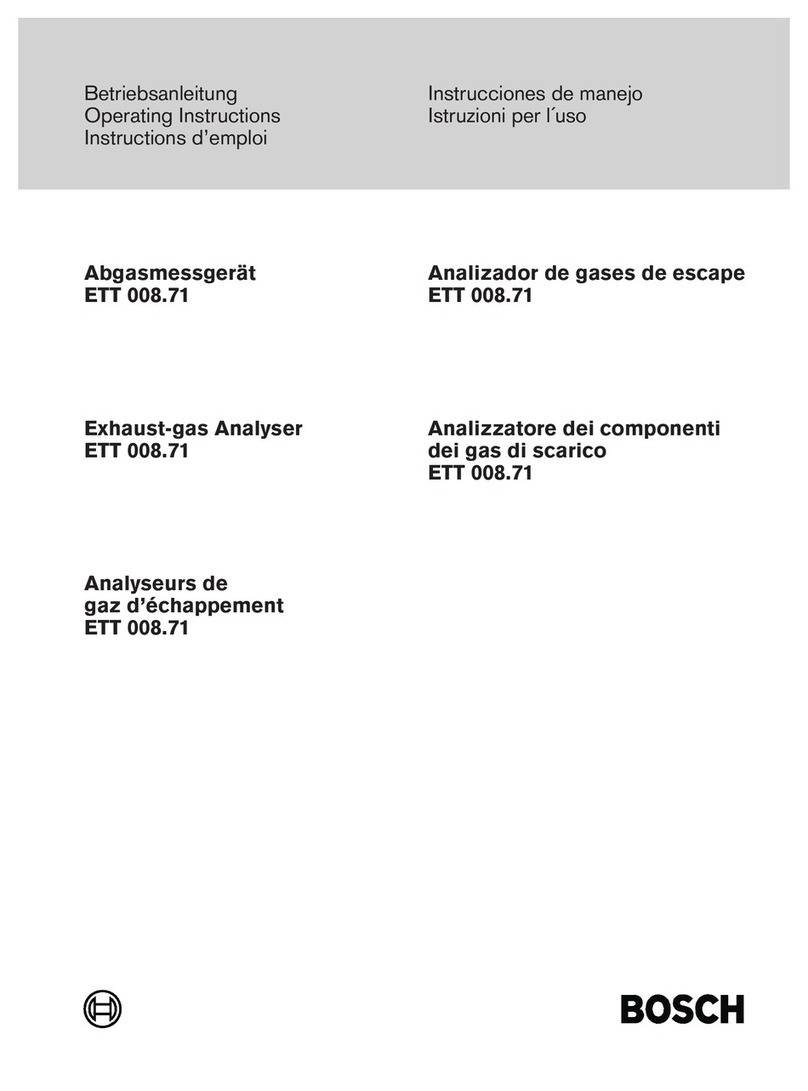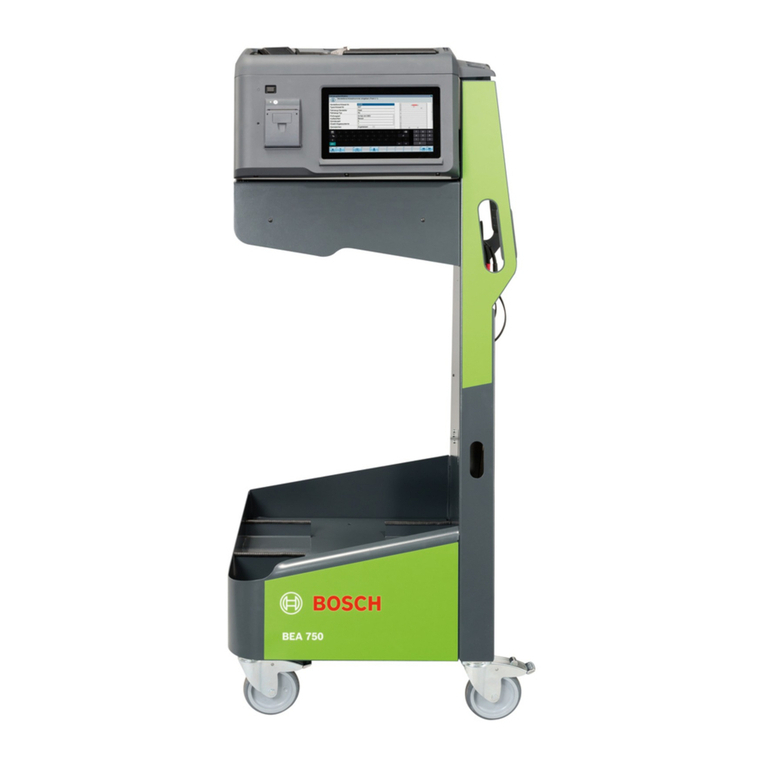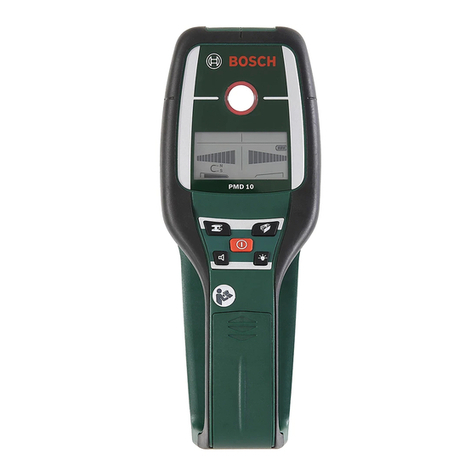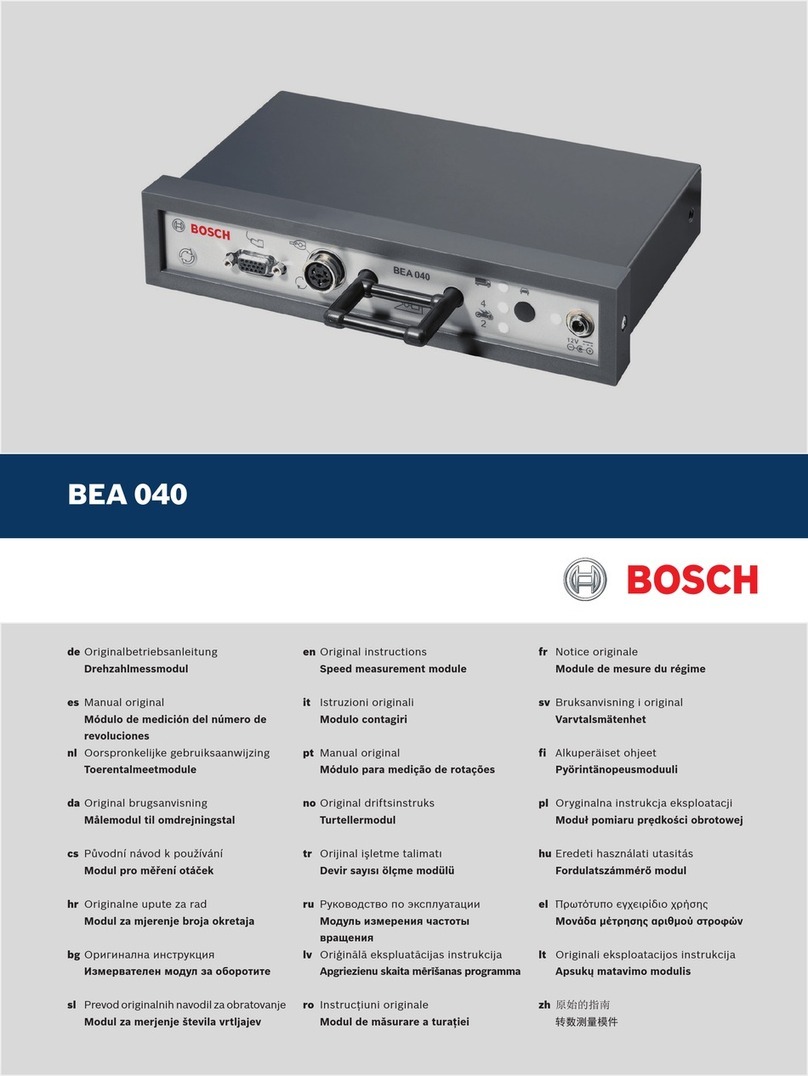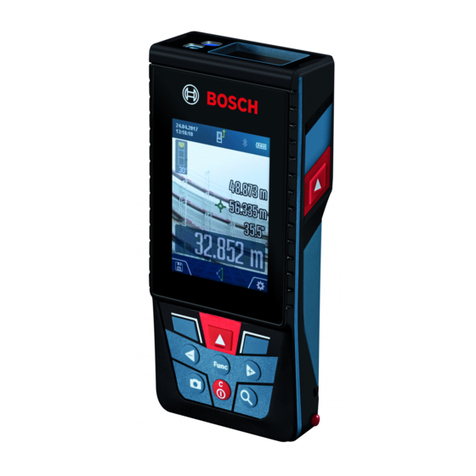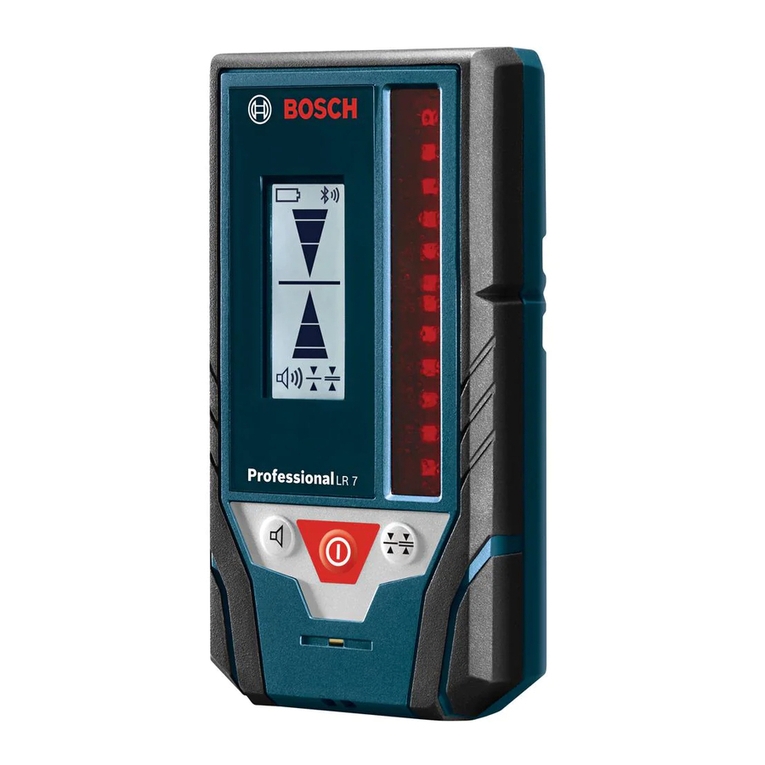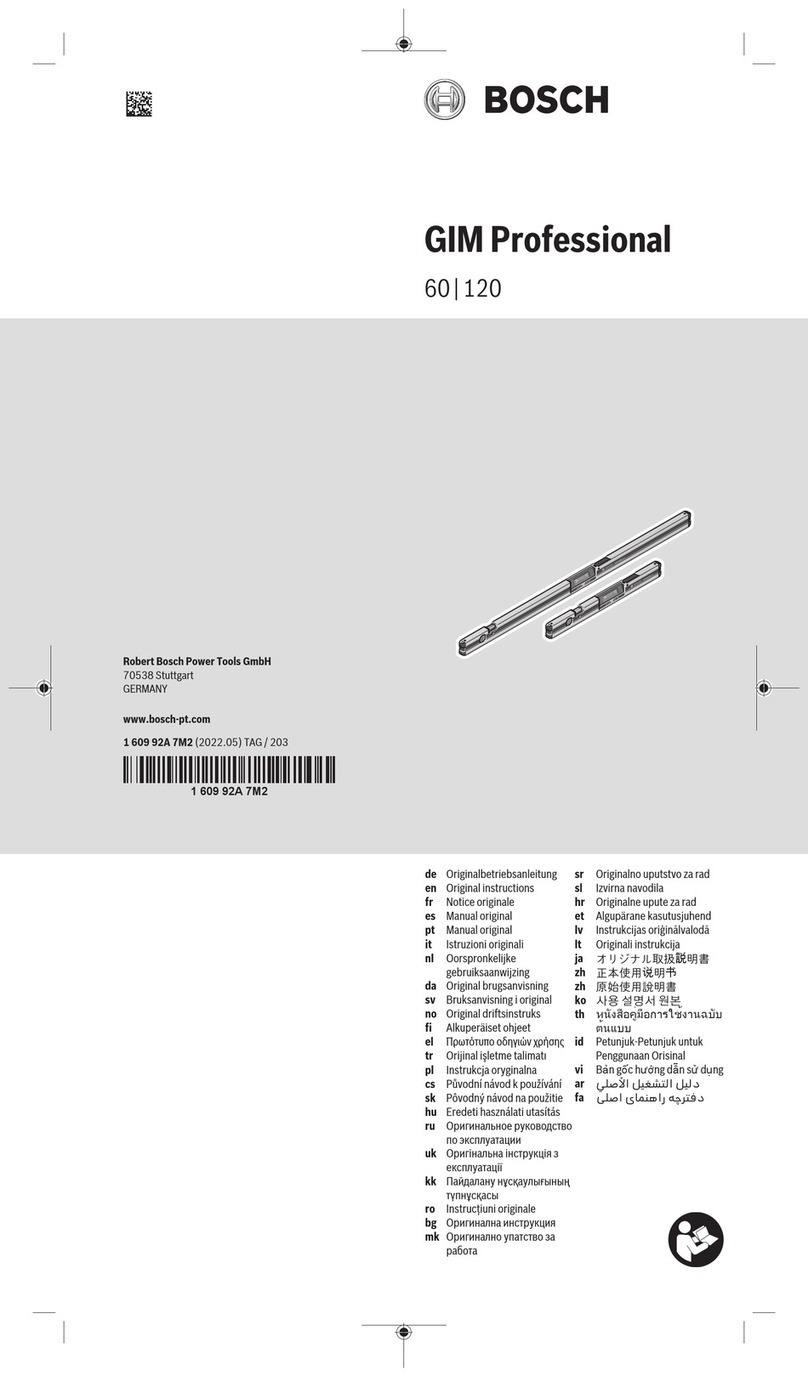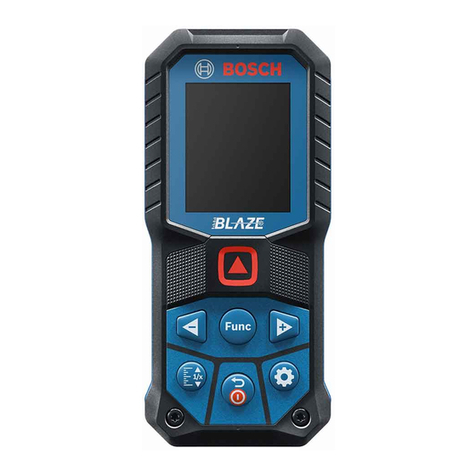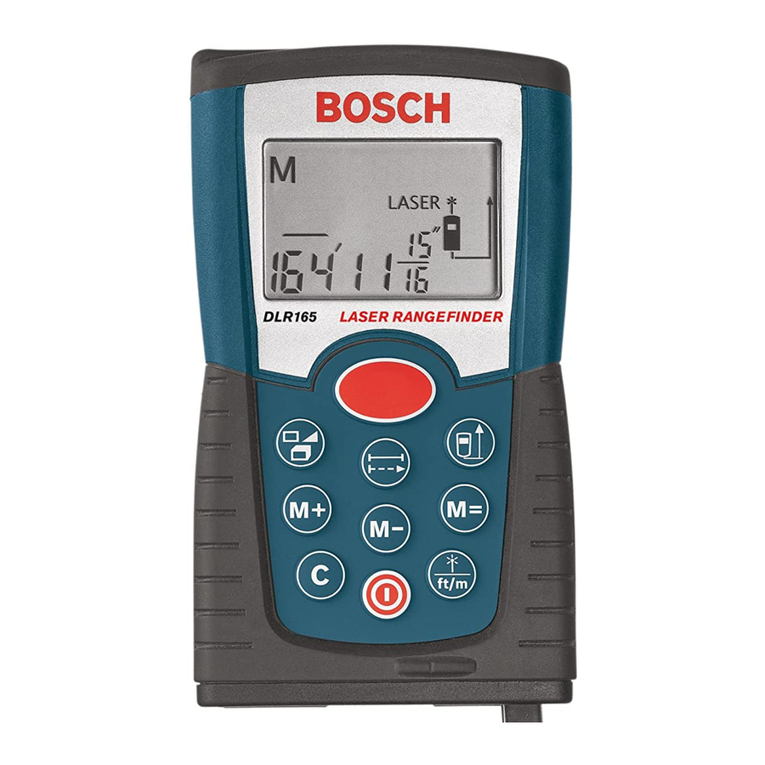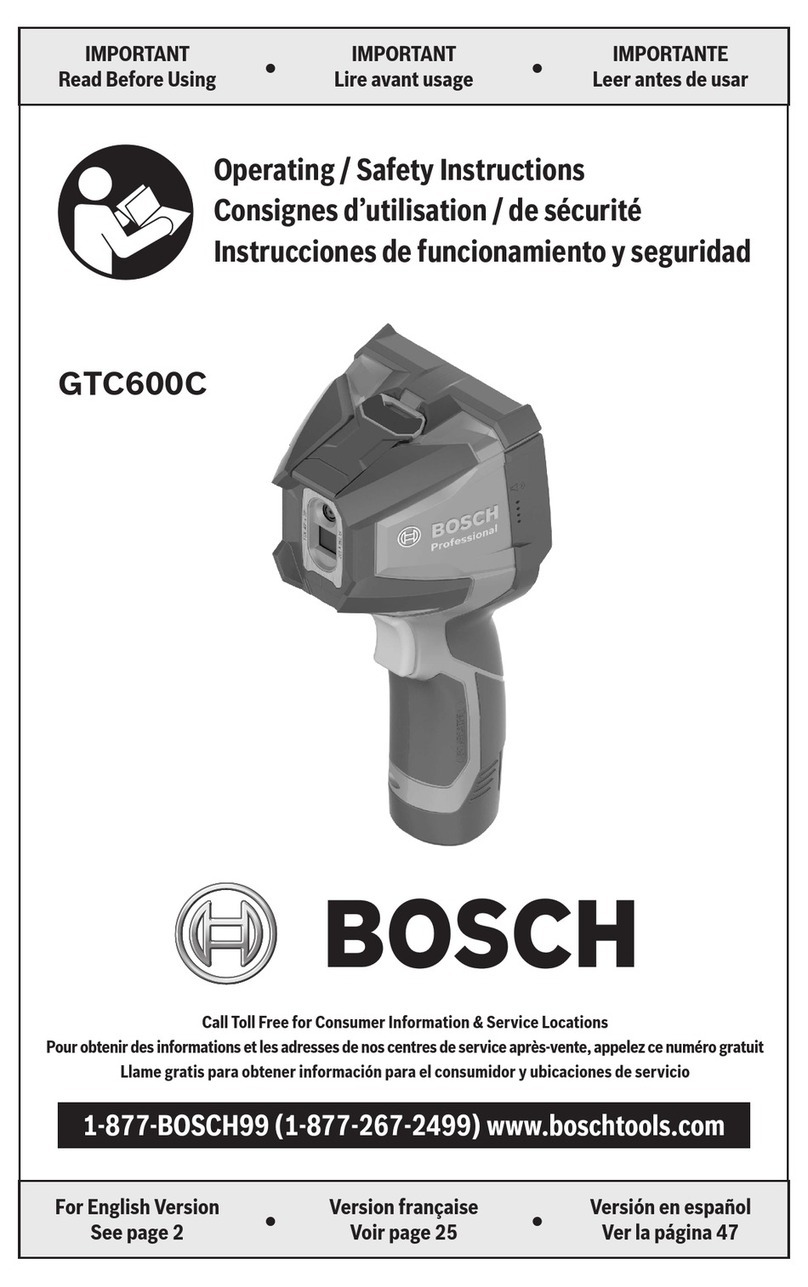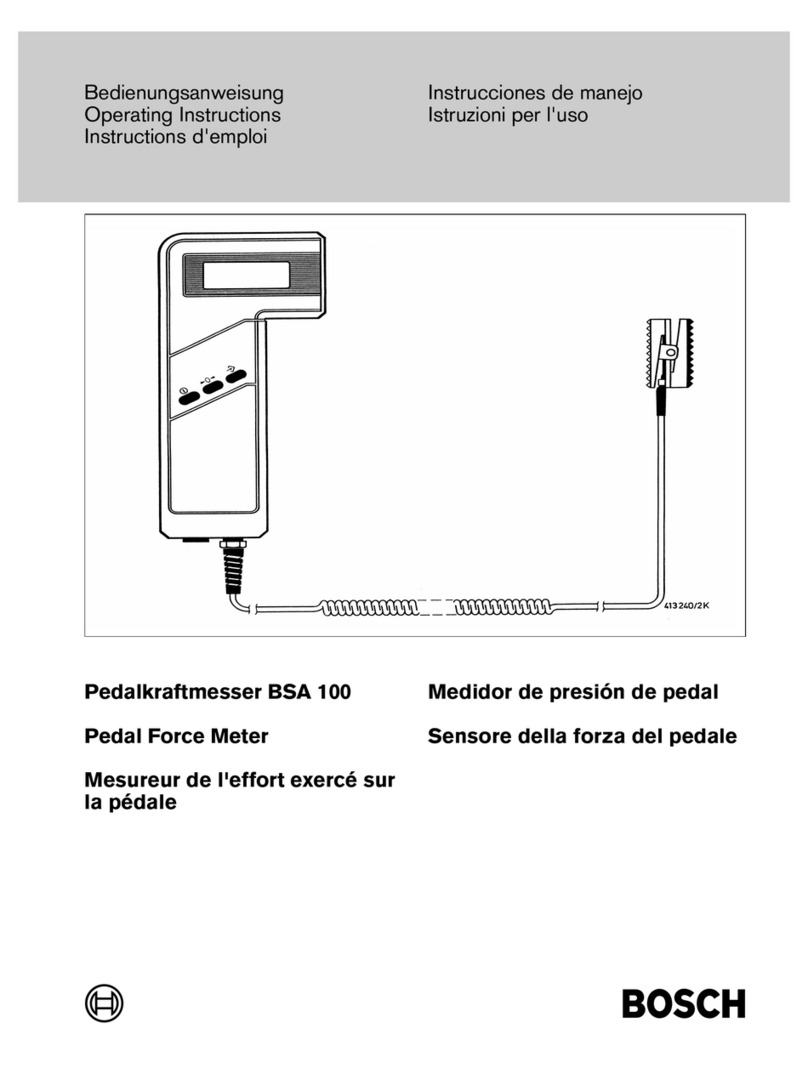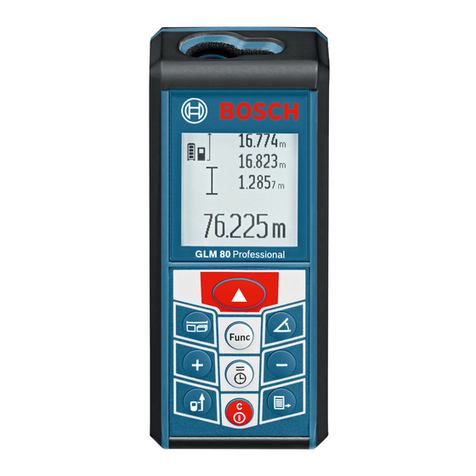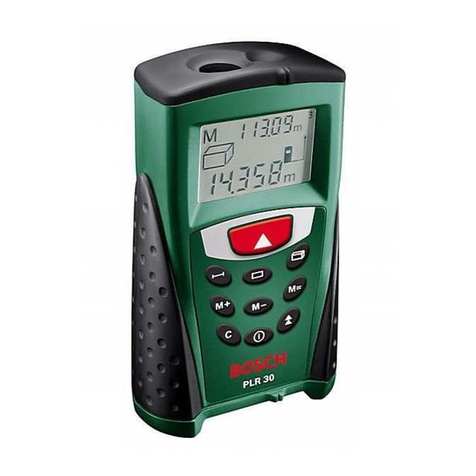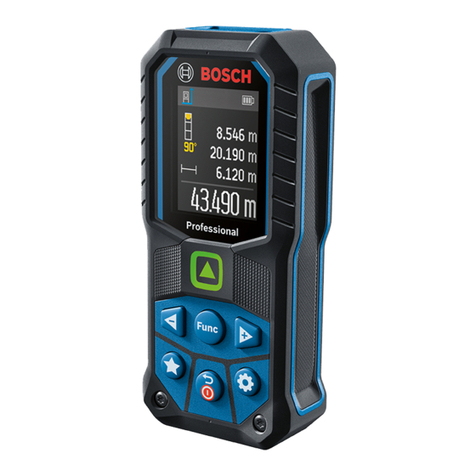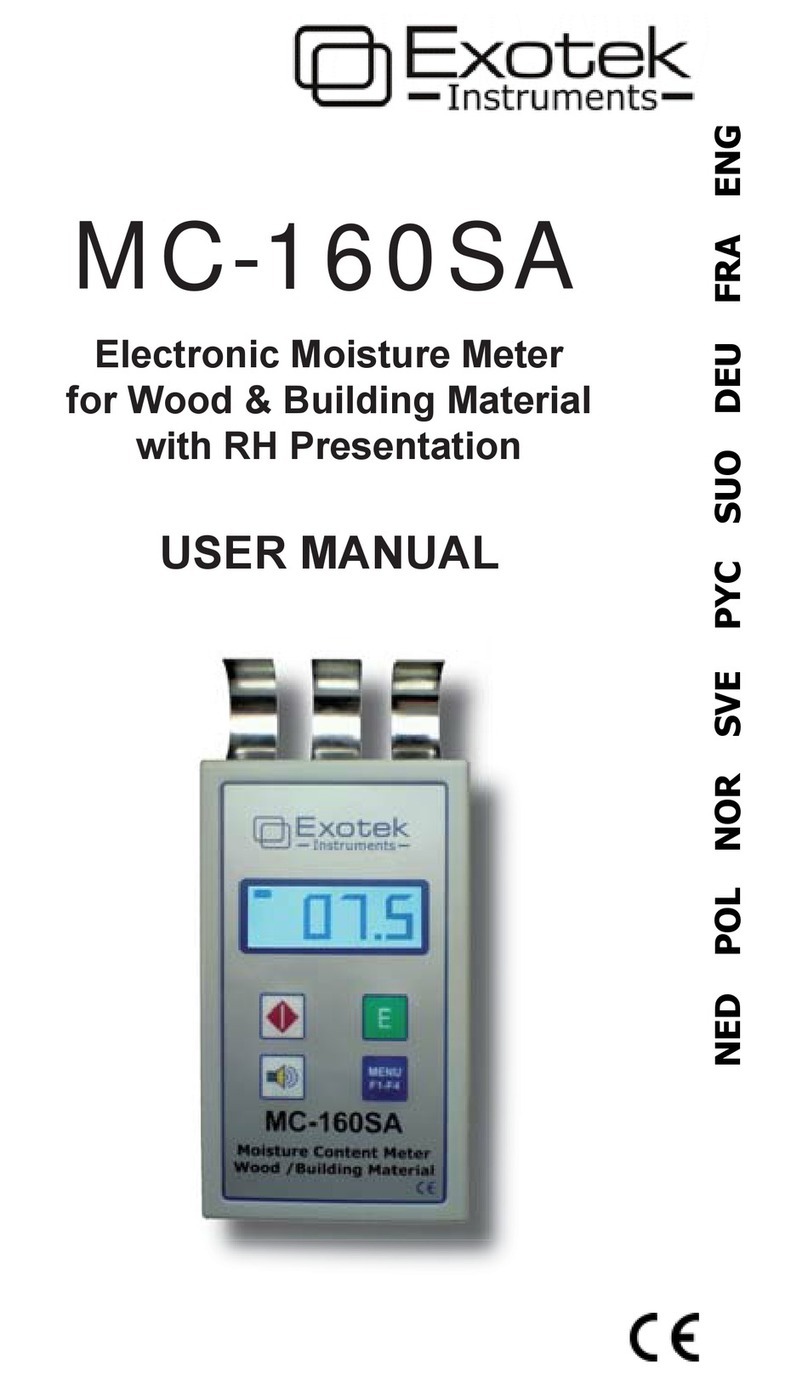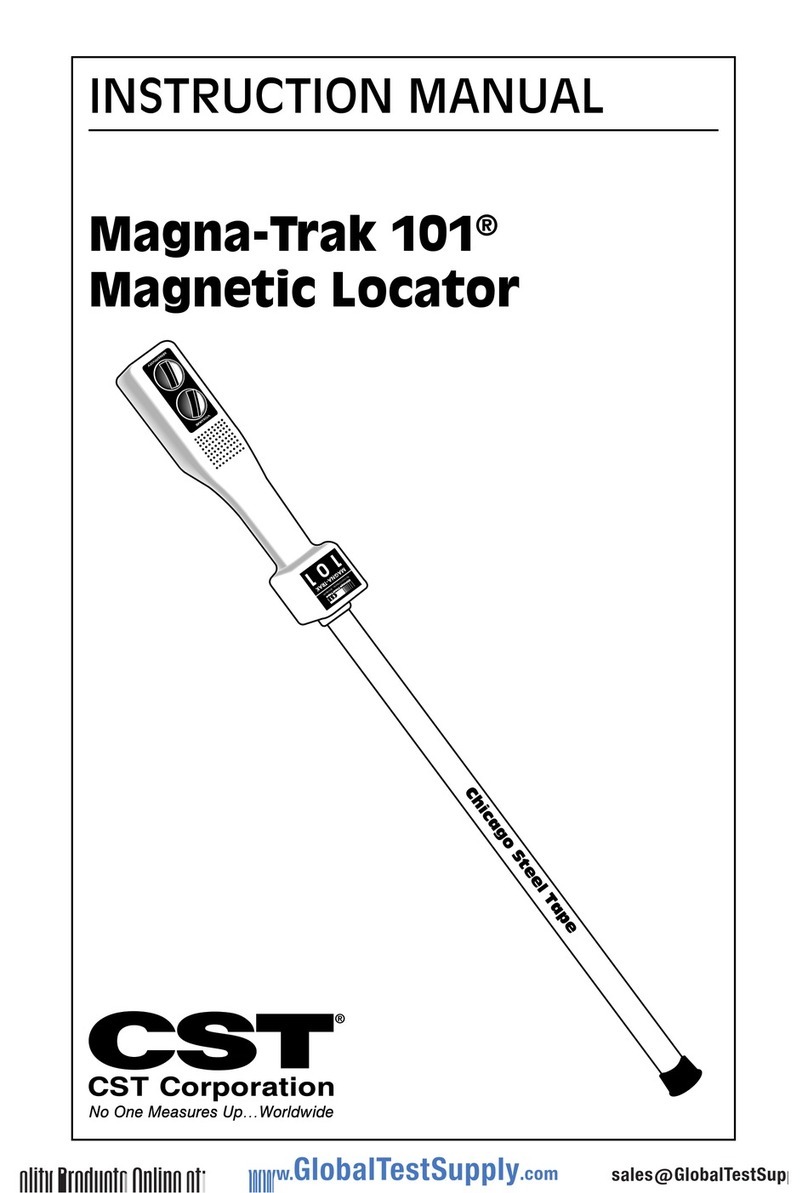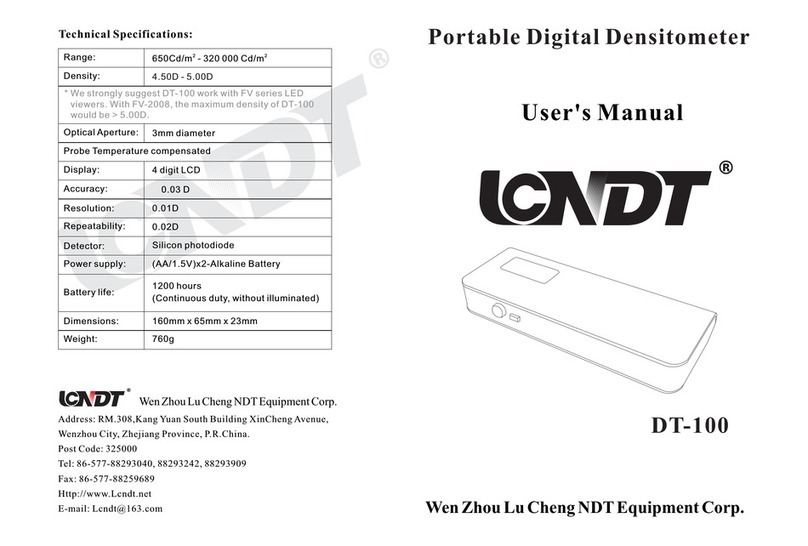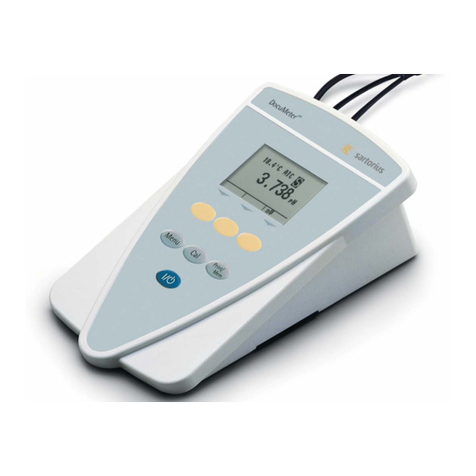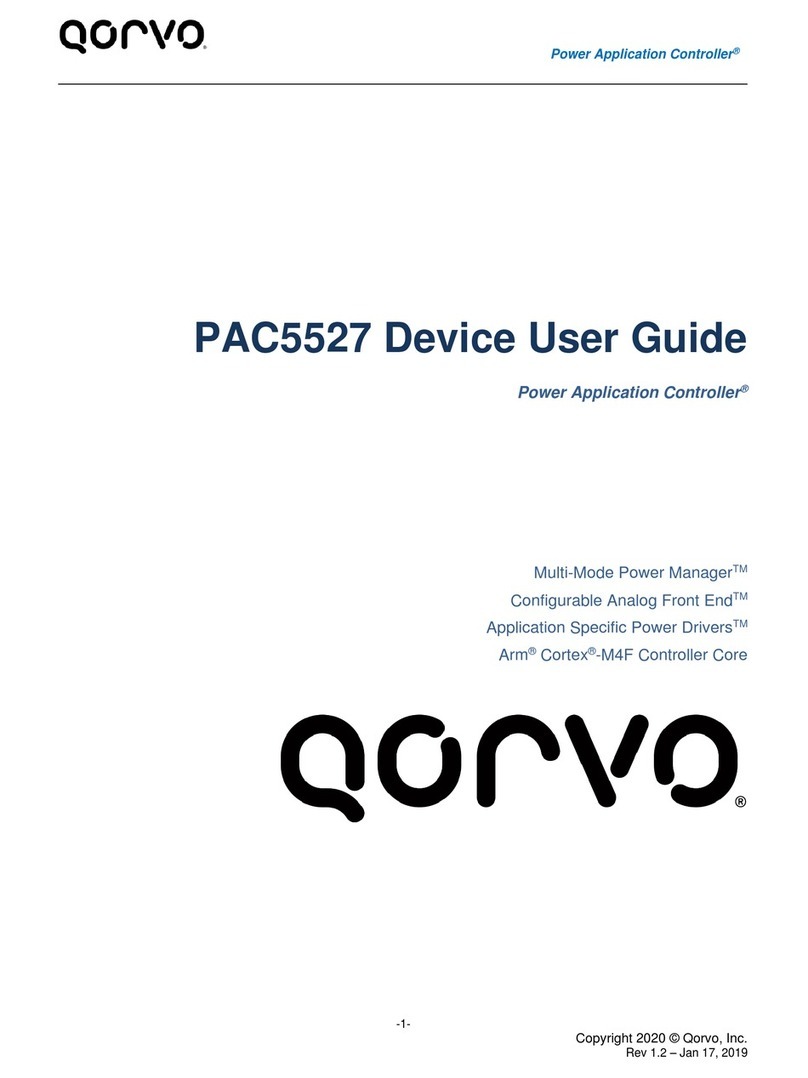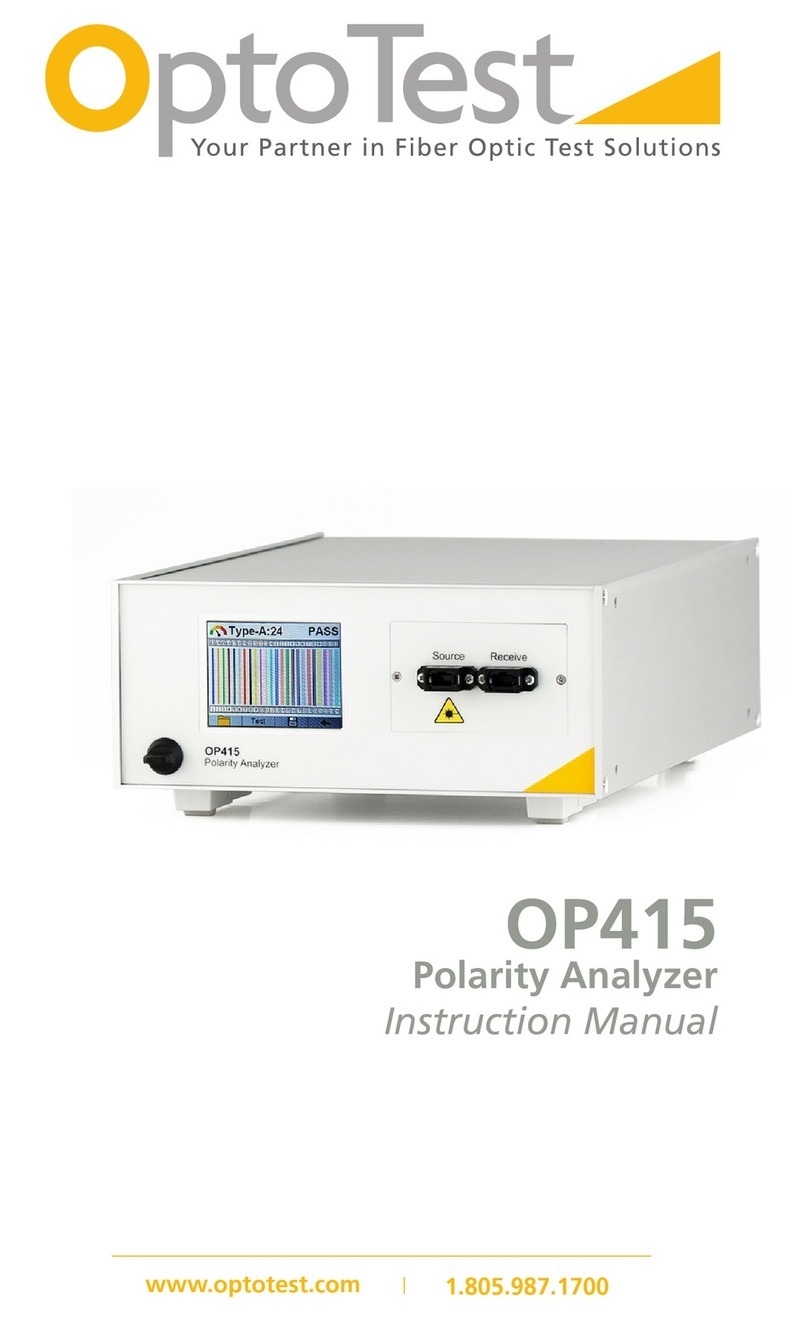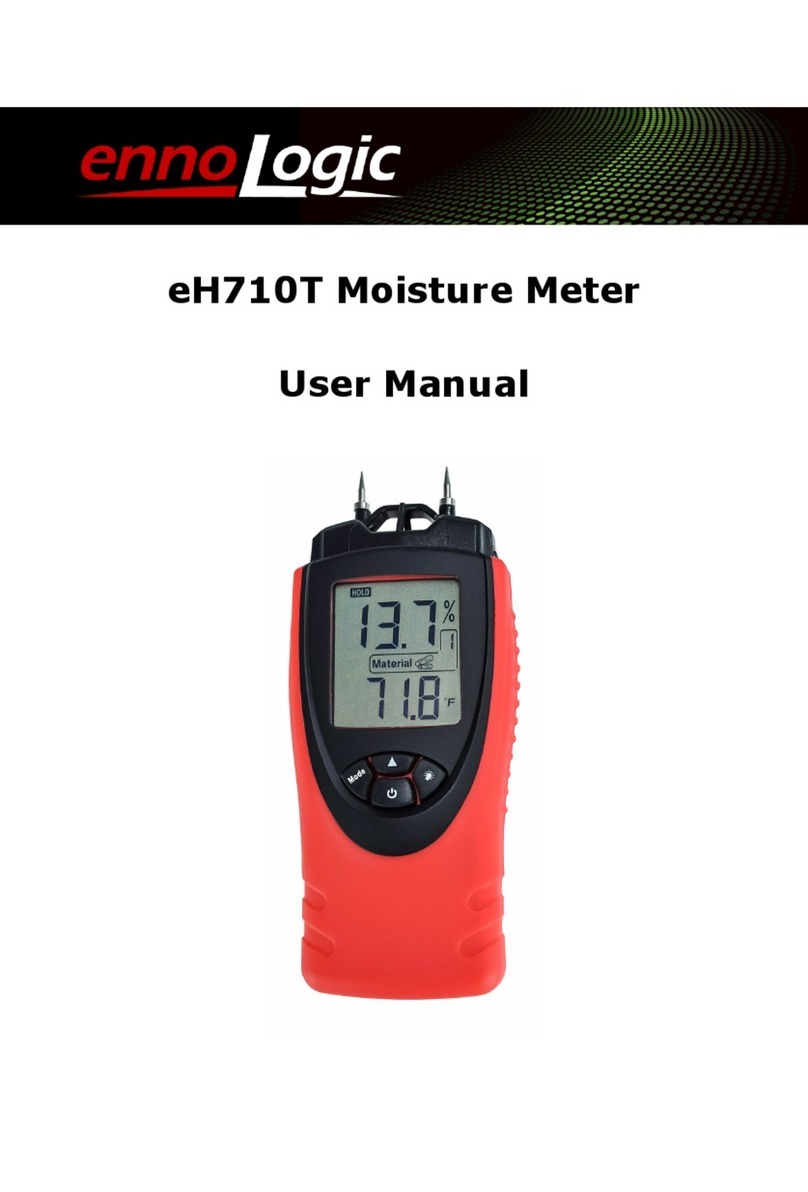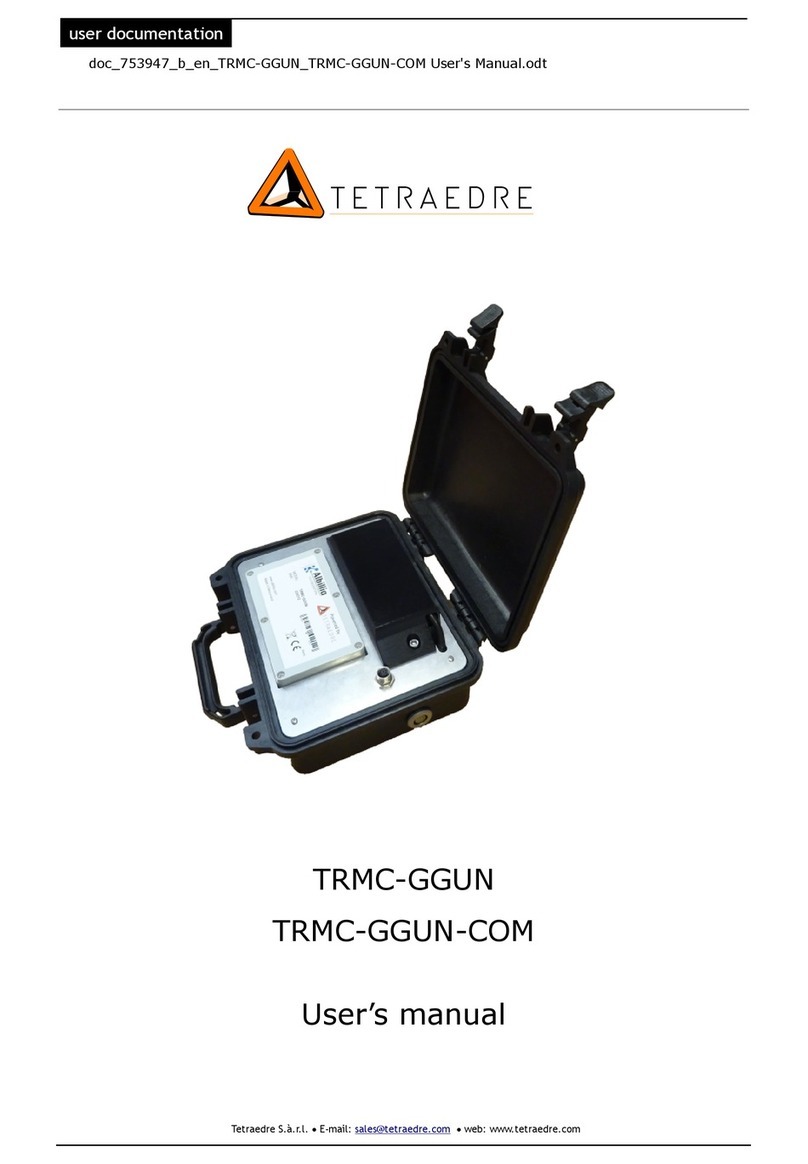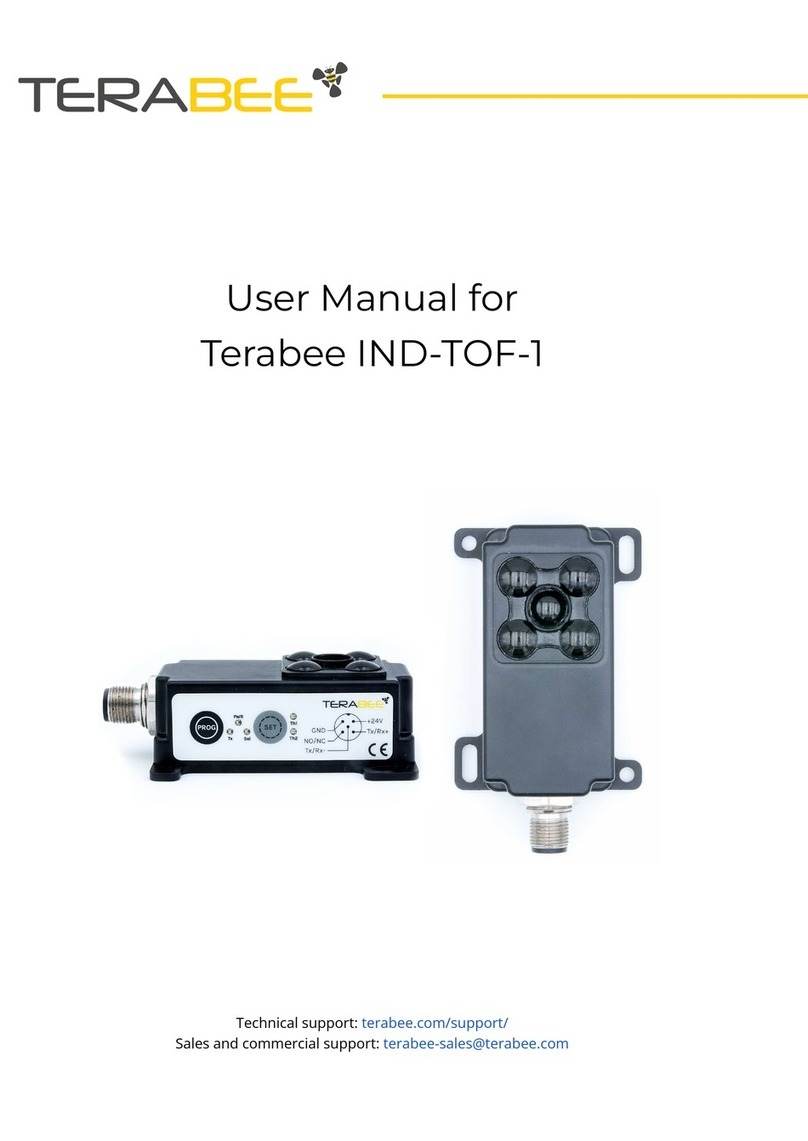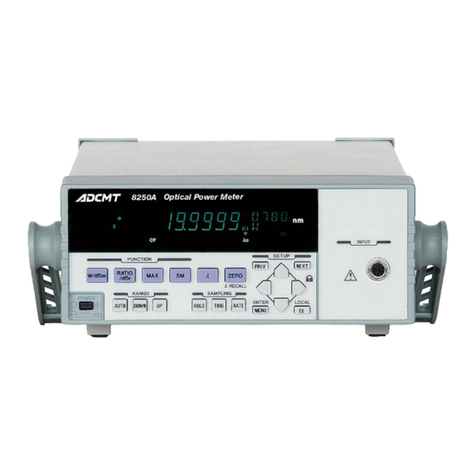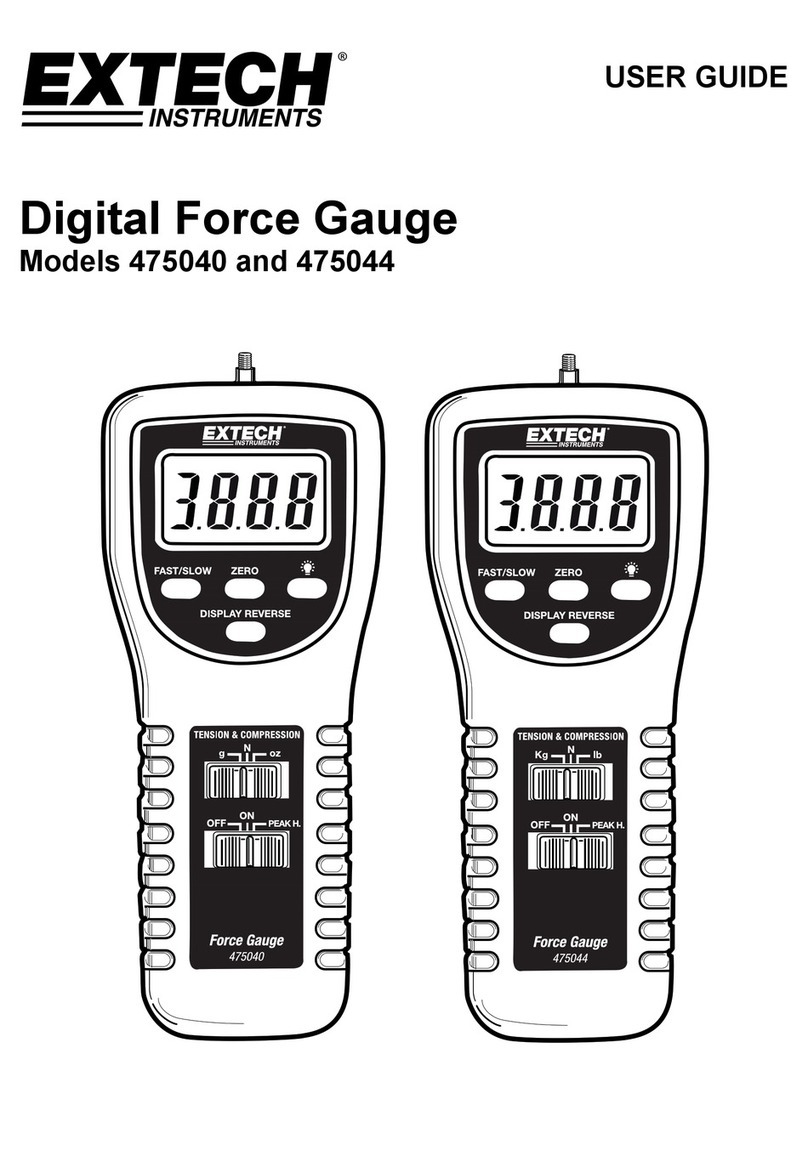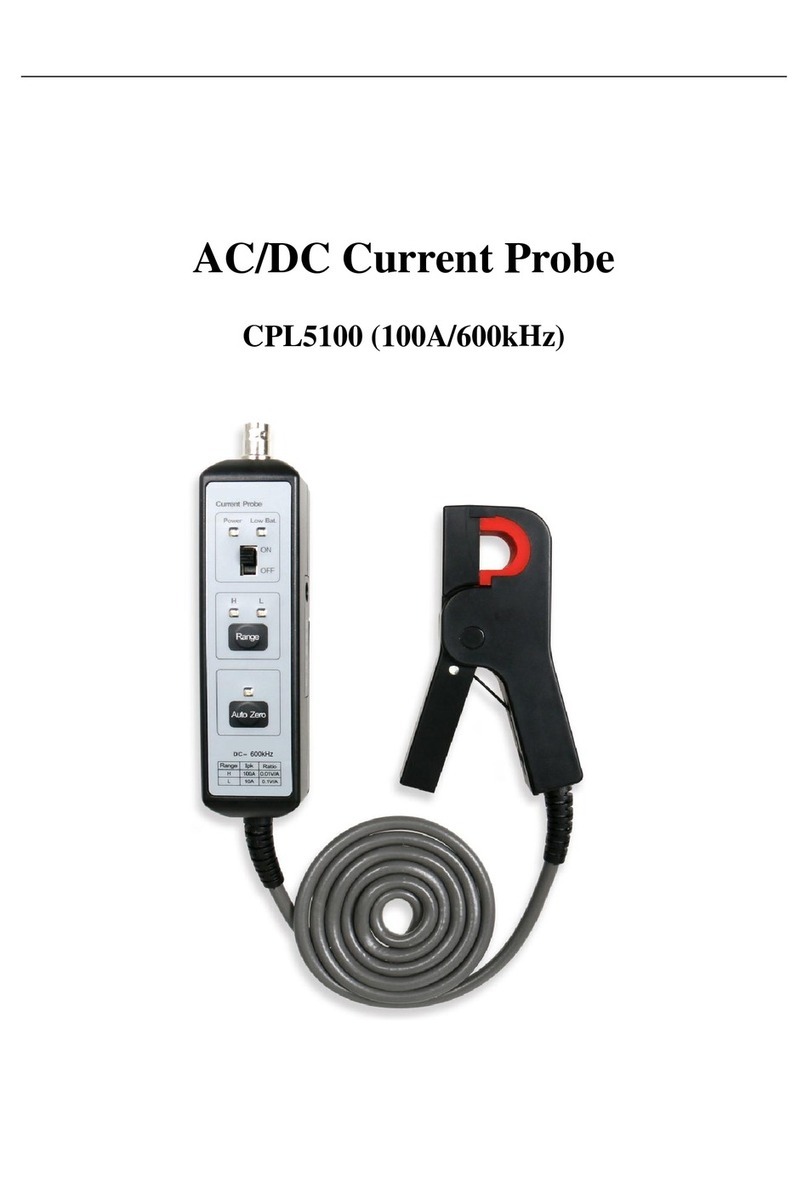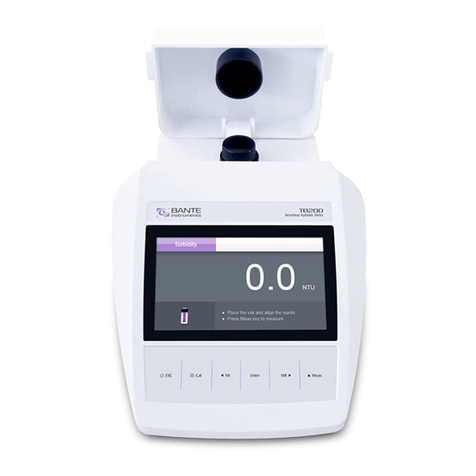16 | English
1 619 929 J48 | (1.7.11) Bosch Power Tools
Robert Bosch GmbH, Power Tools Division
D-70745 Leinfelden-Echterdingen
Leinfelden, 19.05.2011
Assembly
Inserting/Replacing the Battery
To open the battery lid 4, press the latch 5in the direction of
the arrow and remove the battery lid. Insert the batteries/
rechargeable batteries. When inserting, pay attention to the
correct polarity according to the representation on the inside
of the battery compartment.
The battery indicator bin the upper status line on the display
16 indicates the charge condition of the batteries/rechargea-
ble batteries.
Note: Pay attention to the changing battery symbol so that
the batteries/rechargeable batteries are replaced in time.
When the “Please change
batteries” warning indication
is indicated on the display 16,
the settings are saved and the
measuring tool switches off
automatically. Measurements
are no longer possible.
Change the batteries/
rechargeable batteries.
To remove the batteries/rechargeable batteries, press on the
rear end of a battery as indicated in the figure on the battery
lid ( ). The front end of the battery/rechargeable battery is
released from the battery compartment ( ), so that the bat-
tery/rechargeable battery can easily be removed.
Always replace all batteries/rechargeable batteries at the
same time. Do not use different brands or types of batteries/
rechargeable batteries together.
fRemove the batteries/rechargeable batteries from the
measuring tool when not using it for longer periods.
When storing for longer periods, the batteries/rechargea-
ble batteries can corrode and discharge themselves.
Operation
fProtect the measuring tool against moisture and direct
sun light.
fDo not subject the measuring tool to extreme tempera-
tures or variations in temperature. In case of large var-
iations in temperature, allow the measuring tool to ad-
just to the ambient temperature before switching it on.
In case of extreme temperatures or variations in tempera-
ture, the accuracy of the measuring tool and the display in-
dication can be impaired.
fDo not attach any stickers or name-platestothesensor
area 9 on the back of the measuring tool. Especially
metal name-plates affect the measuring results.
fUse or operation of transmitting systems, such as
WLAN,UMTS, radar, transmitter masts ormicrowaves,
in the close proximity can influence the measuring
function.
Method of Operation (see figure B)
The measuring tool checks the
base material of sensor area 9
in measurement direction Ato
the displayed measuring
depth. Measurement is possi-
ble only during movement of
the measuring tool in the direc-
tion of travel Band for a meas-
uring distance of at least
10 cm. Move the measuring
tool in a straight line with
light pressure over the wall
so that the wheels remain in
firm contact with the wall.
Objects are detected that
differfrom the material of the wall. The object depth and, if
possible, the object material, are indicated on the display.
Optimum results are achieved when the measured distance is
at least 40 cm and the measuring tool is moved slowly over
the entire location to be checked. The tool’s method of opera-
tion ensures reliable detection of outer object edges that run
transverse to the measuring tool’s movement direction.
Therefore, always move crossways over the area to be
checked.
If several objects are located one over the other in the wall,
the object that is indicated in the display is the one nearest to
the surface.
The representation of the properties of detected objects in
the display 16 can deviate from the actual object properties.
This applies particularly for very thin objects, which are repre-
sented thicker in the display. Large cylindrical objects (e.g.
plastic or water pipes) can appear in the display smaller than
they actually are.
Detectable Objects
– Plastic pipes (e.g. water-carrying plastic pipes, as used in
floor/wall-heating systems, with at least 10 mm in diame-
ter; empty pipes with at least 20 mm in diameter)
– Electrical wiring (independent of whether carrying voltage
or not)
– Three-phase mains wiring (e.g. to the stove)
– Low-voltage wiring (e.g. for door bell, telephone
– Metal pipes, bars, beams of any type (e.g. steel, copper,
aluminium)
– Reinforcing steel
– Wooden beams
– Hollow spaces
Dr. Egbert Schneider
Senior Vice President
Engineering
Dr. Eckerhard Strötgen
Head of Product
Certification
Please change batteries















